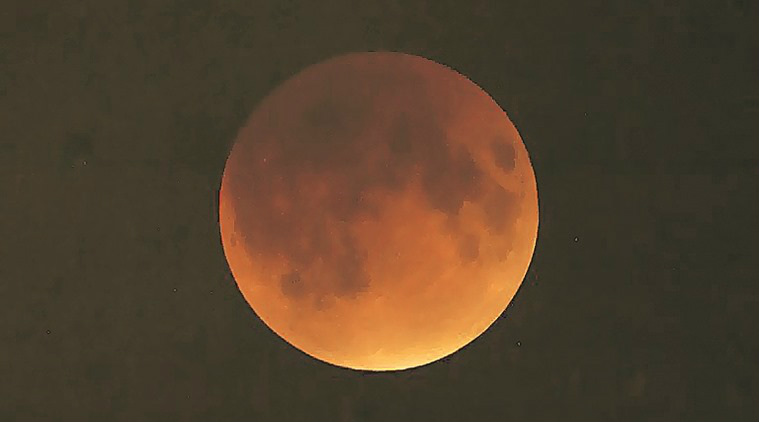Both the moon and Mars will dominate the overnight hours on July 27 and into the morning of July 28, traveling across the sky beside each other while appearing to be separated by only five degrees, equal to the width of three middle fingers held at arm’s length.
On the 27th, the red planet will swing the closest it has come to Earth since August 2003, allowing sky-watchers around the world to see our neighboring world about as big and bright it can ever get in our skies.
And while you shouldn’t expect Mars to look as big as the full moon, as many online hoaxes in past years have suggested, you will also get to see the actual moon painted red as it undergoes a total lunar eclipse.
During a total eclipse, sunlight shining through Earth's dusty atmosphere is bent, or refracted, toward the red part of the spectrum as it is cast onto the moon's surface. As a result, expect to see the lunar disk go from a dark gray color when the eclipse starts to a reddish-orange color during totality.
Meeting Mars
At 1 a.m. ET (5:00 UT) on July 27, Mars will reach what astronomers call opposition. This is when the sun, Earth, and Mars are aligned in a straight path, so that Mars appears to rise in the east just as the sun sets in the west, making the sunlit side of the planet visible all night long.
Mars reaches opposition only once every 26 months, when Earth manages to overtake the planet in its tighter track around the sun. But unlike Earth’s more circular orbit, Mars’s path around the sun is fairly elliptical. That means the distance between the two worlds varies, making some oppositions better than others.
Mars will make its closest approach to Earth for this year on July 31, coming just 35.8 million miles (57.6 million kilometers) away. Such a close approach just a few days after opposition means the July 27 alignment will be your best bet to see the red planet shine its biggest and brightest until 2035.
The previous best encounter occurred 15 years ago, when Mars was a record-breaking 35 million miles (56 million kilometers) distant. Such an epic encounter won’t happen again until 2287.
In addition to offering beautiful views, opposition has traditionally set the stage for robotic invasions of Mars. Because of Mars’s proximity and alignment with our planet, the time around opposition is the best for sending spacecraft, saving travel time and fuel costs. For instance, NASA’s Insight lander launched on May 5 and is headed for a Mars landing this November.
Many keen-eyed onlookers may have already noticed the fiery planet growing brighter in our night skies the past few months, making it easy to spot with nothing more than the naked eye. To track down the warrior planet for yourself, go outside after dusk on any clear night and look for the bright beacon rising above the eastern horizon. Mars will glide high over the southern sky throughout the night, setting in the west by dawn.
Most of the time, Mars is not much to look at through a telescope, but that changes during opposition, when the planet becomes a disk filled with tantalizing features. Even a small telescope with about a six-inch mirror will be able to tease out surface details like the southern ice cap (where astronomers may have just found an underground lake) and distinct, dark regions that are windswept, rocky fields.
However, a colossal dust storm has been raging for the past two months on Mars and has enveloped most of the planet, which means telescope views have been a bit hindered. But you can plainly see the effect of all this dust with the naked eye: Mars currently appears to shine with a more yellowish tinge rather than its usual rusty orange hue. - www.novinite.com




